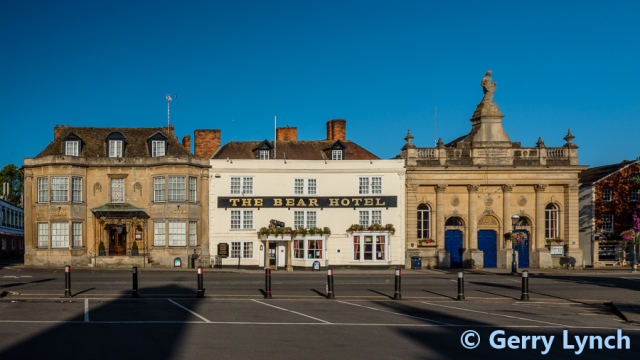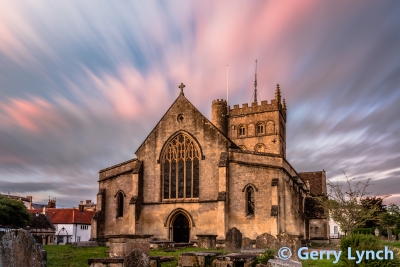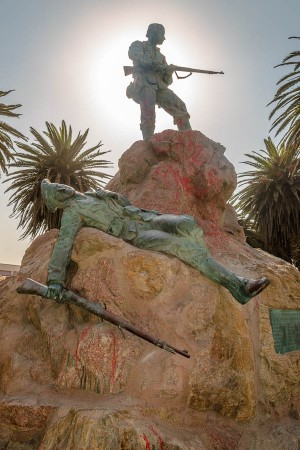 The west side of the Market Square of Devizes in Wiltshire (population 15,500). The Bear Hotel, which occupies the two left-hand buildings, dates back at least to the 16th Century, but reached both its current form with Doric front and stucco pillars, and the height of its popularity towards the end of the 18th Century, when it provided lodging and alimentation for the then rapidly expanding coach traffic transiting the town between London and Bath or Bristol. The statue of the bear above the front door was removed from its previous perch in the Market Square and placed here around 1800.
The west side of the Market Square of Devizes in Wiltshire (population 15,500). The Bear Hotel, which occupies the two left-hand buildings, dates back at least to the 16th Century, but reached both its current form with Doric front and stucco pillars, and the height of its popularity towards the end of the 18th Century, when it provided lodging and alimentation for the then rapidly expanding coach traffic transiting the town between London and Bath or Bristol. The statue of the bear above the front door was removed from its previous perch in the Market Square and placed here around 1800.
The Corn Exchange, the right hand building, is somewhat later, dating to 1857, in Victorian classical style and the Bath stone which the opening of the Kennet and Avon Canal brought so much of to Devizes after it opened 1810. The building is topped by a statue of Ceres, Roman god of the harvest. The building made Devizes one of England’s premier sites for trading in corn. It now largely provides a venue for social and arts events.
Rare indeed is the opportunity to photgraph these buildings without parked cars in the way, but an early Sunday morning in lockdown-lite was perfect, with an almost cloudless sky.
A market is still held in the square every Thursday.
For those interested in the history of Devizes, I highly recommend Lorna Haycock’s History and Guide of the town, available from all good bookshops.







 Swakopmund always feels a little odd, like a piece of Germany somehow teleported into Namibia’s remote and thinly populated Atlantic Coast. Even in that context, the presence of the Marinedenkmal in the centre of town feels utterly weird.
Swakopmund always feels a little odd, like a piece of Germany somehow teleported into Namibia’s remote and thinly populated Atlantic Coast. Even in that context, the presence of the Marinedenkmal in the centre of town feels utterly weird.



